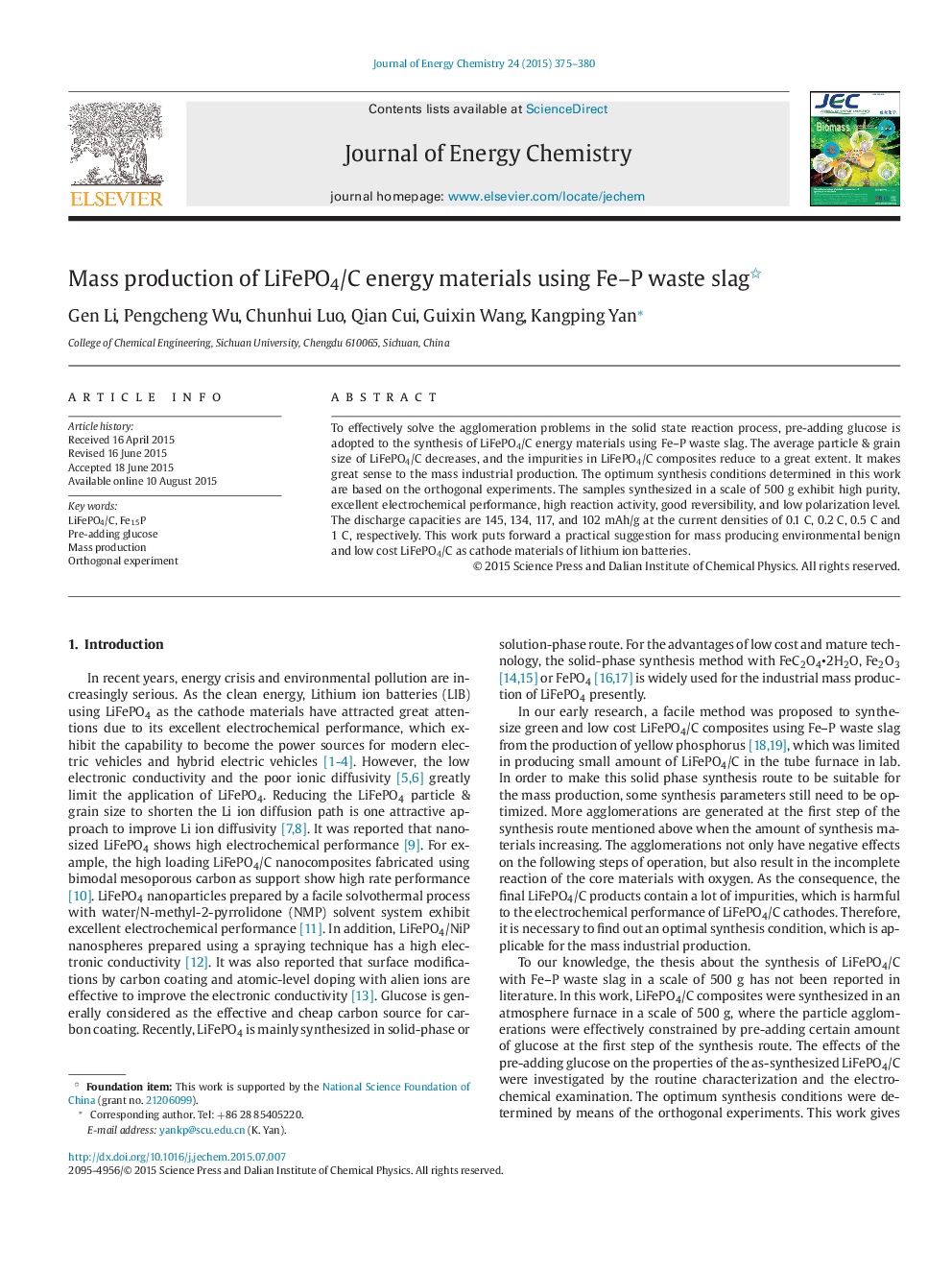| Article ID | Journal | Published Year | Pages | File Type |
|---|---|---|---|---|
| 63839 | Journal of Energy Chemistry | 2015 | 6 Pages |
To effectively solve the agglomeration problems in the solid state reaction process, pre-adding glucose is adopted to the synthesis of LiFePO4/C energy materials using Fe–P waste slag. The average particle & grain size of LiFePO4/C decreases, and the impurities in LiFePO4/C composites reduce to a great extent. It makes great sense to the mass industrial production. The optimum synthesis conditions determined in this work are based on the orthogonal experiments. The samples synthesized in a scale of 500 g exhibit high purity, excellent electrochemical performance, high reaction activity, good reversibility, and low polarization level. The discharge capacities are 145, 134, 117, and 102 mAh/g at the current densities of 0.1 C, 0.2 C, 0.5 C and 1 C, respectively. This work puts forward a practical suggestion for mass producing environmental benign and low cost LiFePO4/C as cathode materials of lithium ion batteries.
Graphical abstractThe pre-adding glucose can effectively solve the agglomeration problems in the solid state reaction process and greatly improve the electrochemical performance of the final LiFePO4/C products.Figure optionsDownload full-size imageDownload as PowerPoint slide
